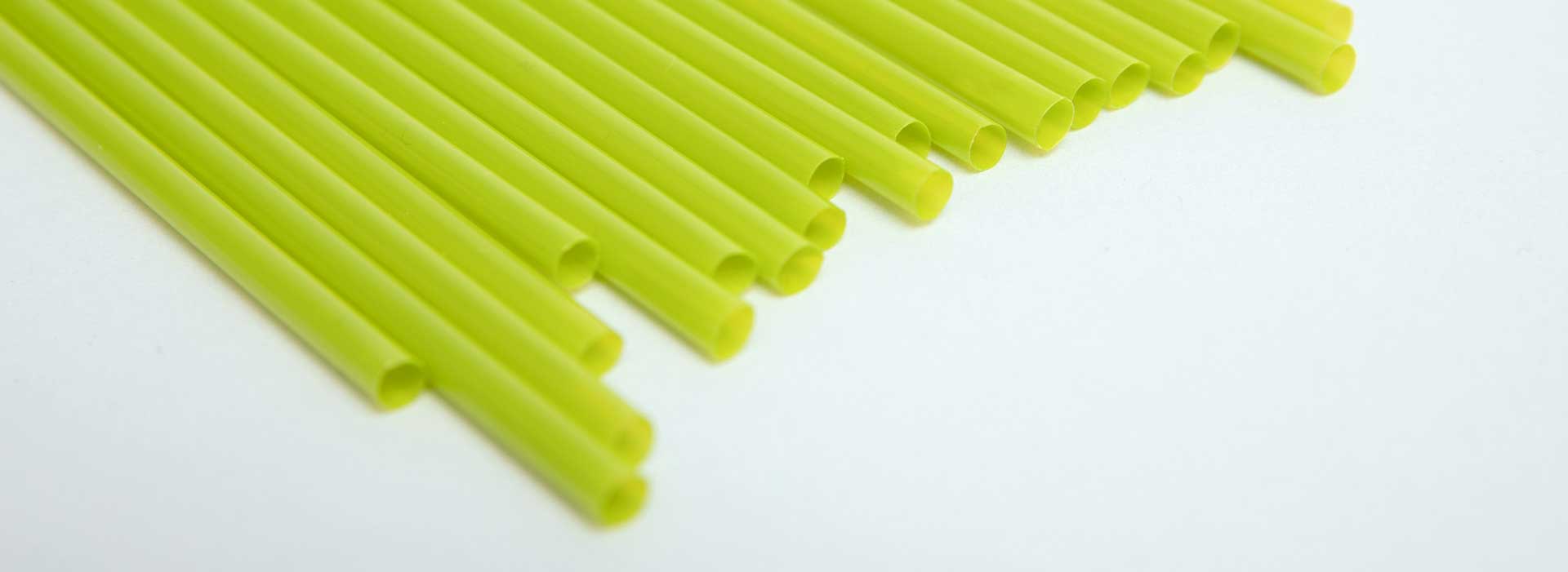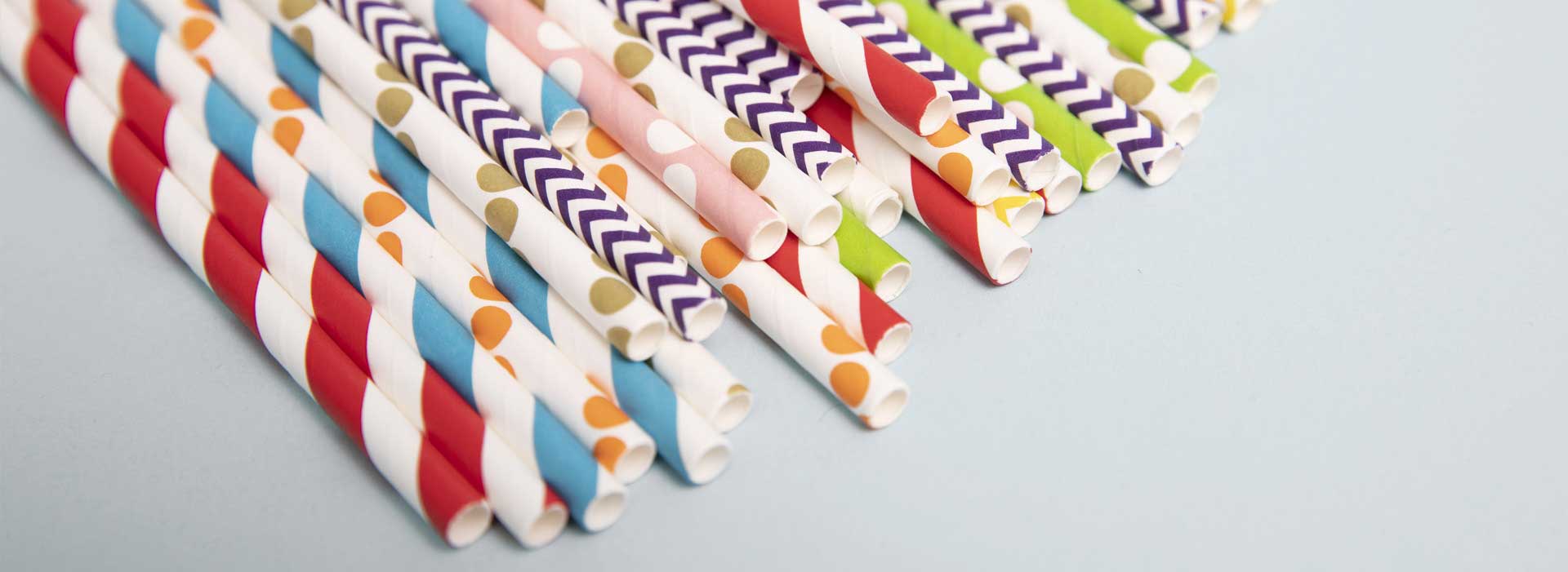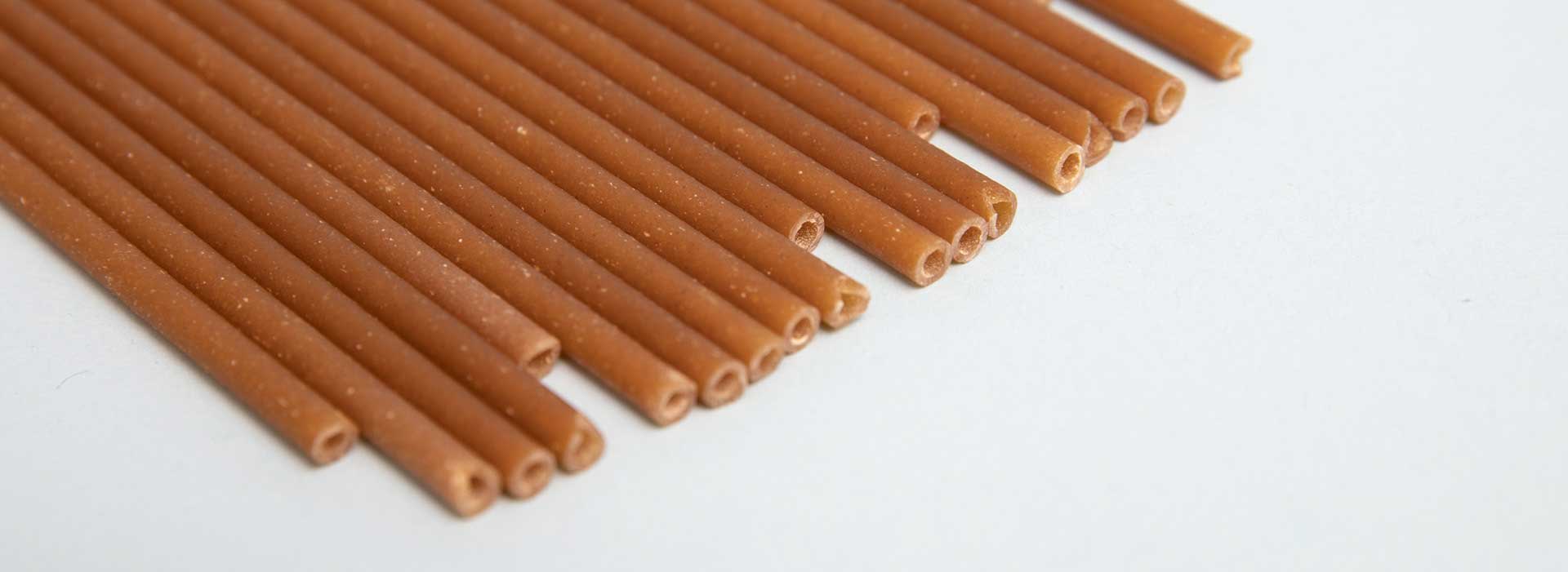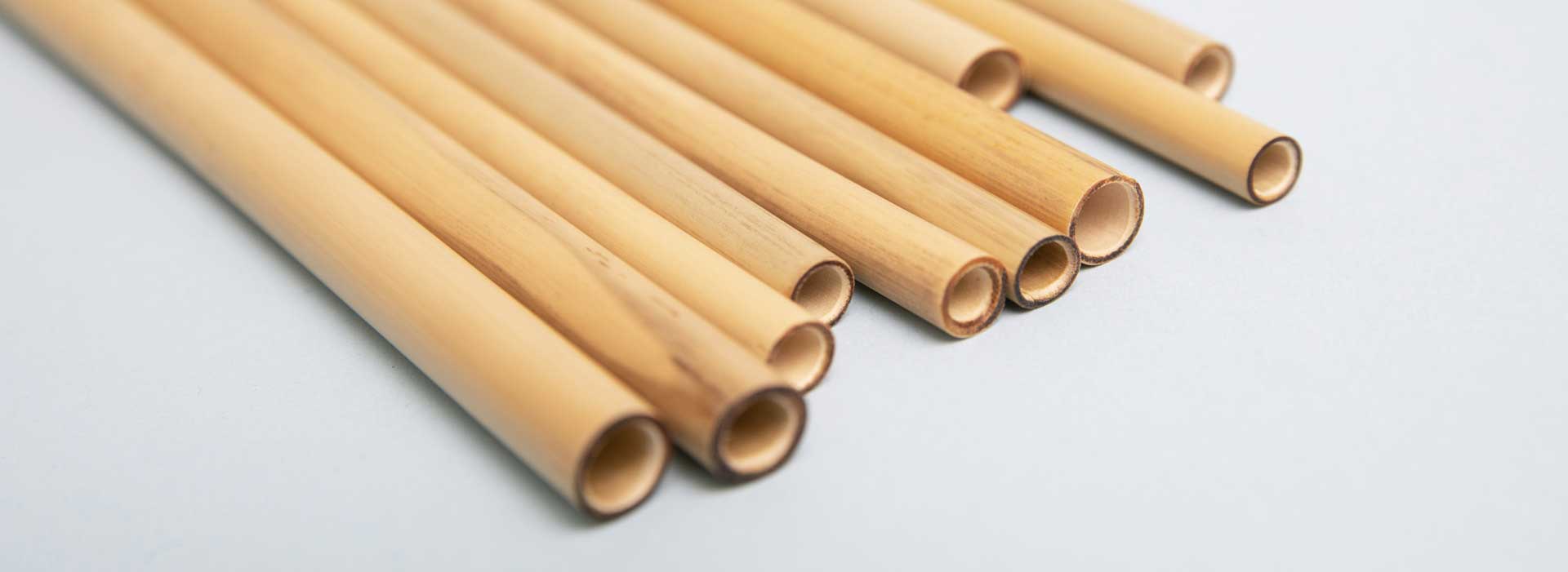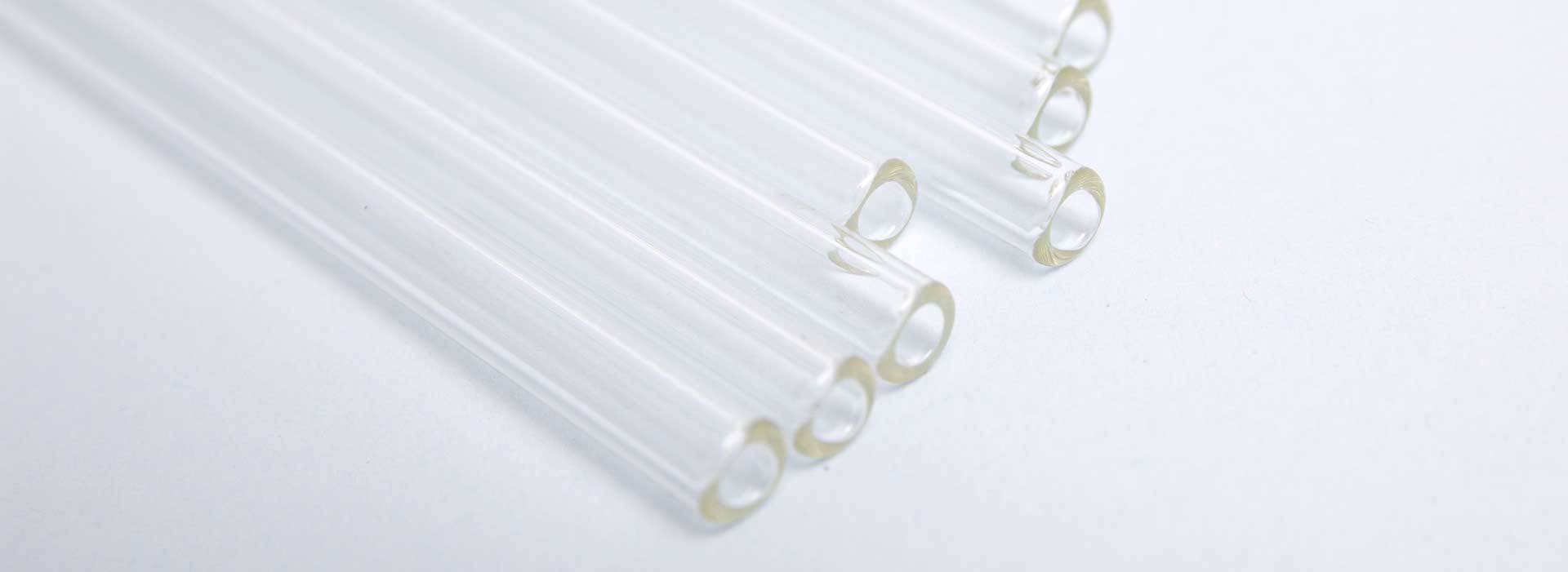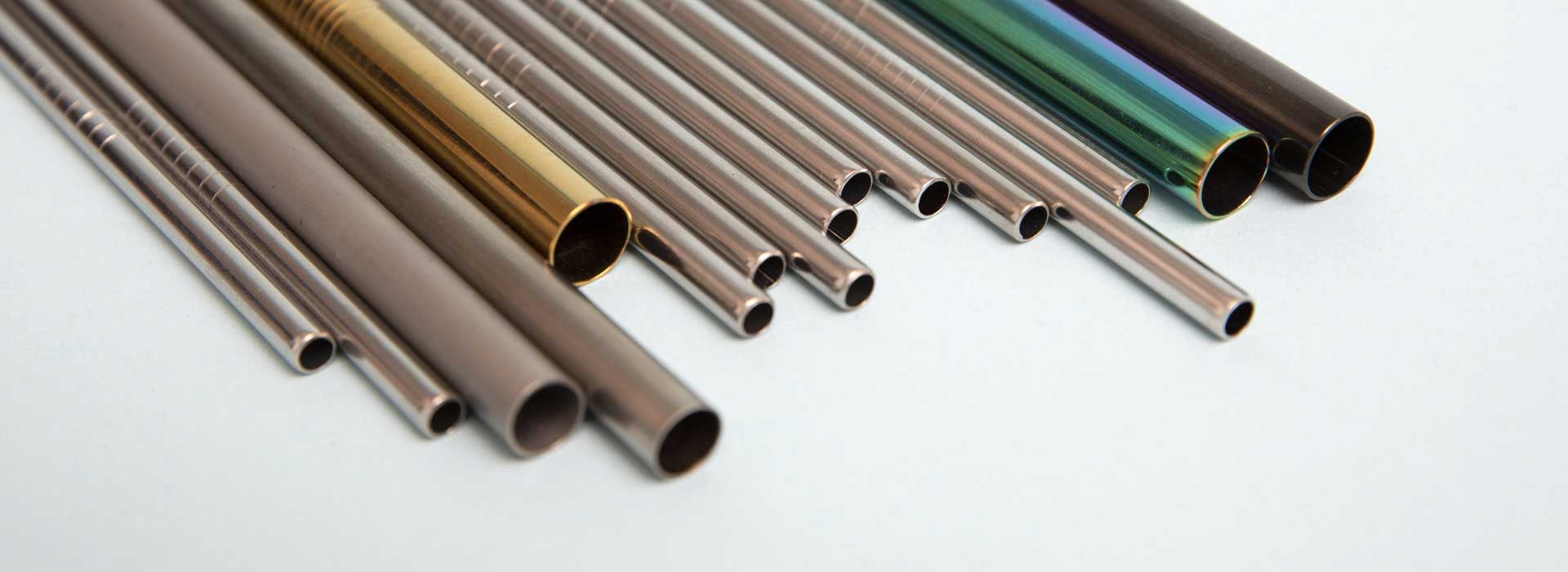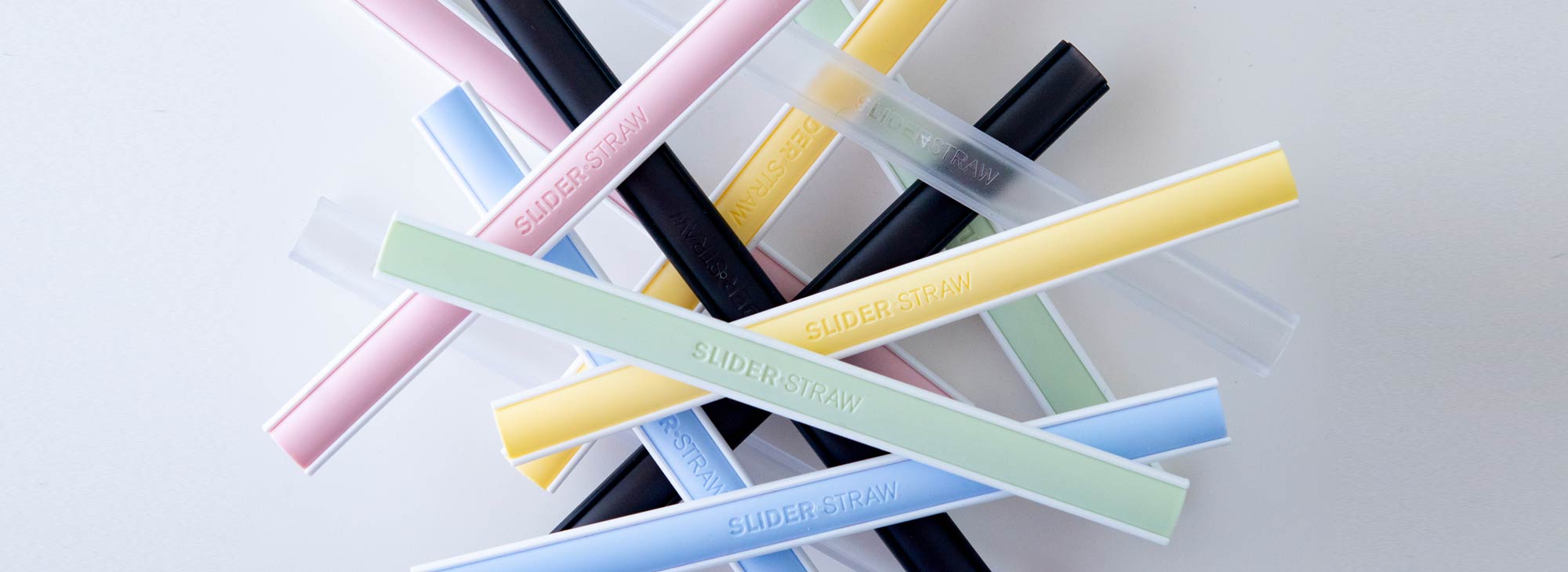STROHHALM-ALTERNATIVEN IM VERGLEICH
How can we prevent billions of drinking straws from ending up in the garbage every day?
What are the alternatives to plastic straws? Basically, they can be divided into two general groups: disposable and reusable.
Reusable-straws
made of glass, stainless steel, or plastic; a better ecological footprint in contrast to disposable drinking straws, and a more suitable alternative as part of a circular economy. However, they are very difficult to clean; it is only possible to remove all residue manually and laboriously using a small brush.
Alternative disposable-straws
made of paper, apple residue, and so-called "bioplastics" are biodegradable to a limited extent, but pollute the environment due to their poor ecological footprint, also end up in the garbage after a short period of enjoyment, and are not recyclable.
Drinking straws compared
We tested out the most popular alternatives from the two groups, took a close look, and summarized the results—read for yourself why many of these products are not such a good choice after all:
Disposable straws
"Bioplastic" is not clearly defined. It could be produced using biomaterial such as sugar cane or corn, but might also contain conventional plastics. Its ecological footprint? Enormous. Continue reading
Contains chemical additives
e.g. stabilisers
High CO2 and
Resource consumption
Attention Greenwashing!
Poor ecological balance
Not recyclable and not compostable!
Advantages:
- Hygienic
- Shatterproof
- Tasteless
Disadvantages:
- disposable
- High CO2 and resource consumption
- Food waste
- Not recyclable
- Micro- and nanoparticles are released during the degradation process
- Contains chemical stabilizers
Not harmless at all. Paper drinking straws contain stabilizers that can enter your drink and can be carcinogenic. Due to their chemical treatment, paper straws are not recyclable. Producing them uses up valuable wood resources. Continue reading
Not tasteless
Contains chemical additives
e.g. stabilisers
Not dishwasher
suitable
Poor ecological balance
Not recyclable and not compostable!
Advantages:
- Visually appealing
- Hygienic
- Shatterproof
Disadvantages:
- disposable
- Contain carcinogenic substances
- Poor ecological balance
- High water and energy consumption
- Not recyclable - disposal only via residual waste
- Non biodegradable
- Not tasteless
- High consumption of wood resources
They are made of foodstuffs or residues that could be used for animal feed. And they are often not eaten but simply thrown away, and use up a lot of energy during production. Continue reading
Not tasteless
Not dishwasher
suitable
Attention Greenwashing!
Poor ecological balance
Advantages:
- Biodegradable
- Hygienic
Disadvantages:
- disposable
- Food waste
- Requires a lot of energy and water
- Poor ecological footprint
- Not tasteless
- Hohe Wandstärke und geringer Durchmesser
Reusable straws
Reusable and natural material but a poor ecological footprint. Bamboo drinking straws are expensive to produce, can be contaminated with pesticides and germs, and are not suitable for catering. Continue reading
Contains chemical additives
e.g. stabilisers
High CO2 and
Resource consumption
Poor ecological balance
Not hygienic!
Deposits inside
Advantages:
- Reusable
- Natural material
- Disposal with biowaste
- Shatterproof
Disadvantages:
- Not suitable for the dishwasher
- Risk of germs forming and contamination from pesticides
- Cleanliness cannot be checked visually.
- Can be contaminated with pesticides under certain circumstances
- Unsightly discoloring
- Not tasteless
- Can't be used in catering
- Not recyclable
Glass drinking straws are reusable and look good at first glance. But: Inadequate cleaning options lead to germ and lime formation, and the fragile material is potentially dangerous. Continue reading
Attention risk of breakage!
A danger for children
Poor ecological balance
Cleaning only with brush!
Residues are difficult to remove
Not hygienic!
Deposits inside
Advantages:
- Reusable
- Recyclable
- Completely tasteless
- Dishwasher-safe
- Free from harmful substances
Disadvantages:
- Complicated to clean
- Health hazard due to germ formation
- Risk of injury, especially to children
- Unaesthetic in the long term
Reusable, but no alternative. Stainless steel drinking straws are difficult to clean, promote germ formation, and pose a potential risk of injury. Ecological footprint? Poor, owing to CO2 emissions in production alone. Continue reading
Not tasteless
High CO2 and
Resource consumption
Not recyclable and not compostable!
Cleaning only with brush!
Residues are difficult to remove
Not hygienic!
Deposits inside
Advantages:
- Reusable
- Good-looking
- Reusable
- Dishwasher-safe
- Tasteless
- Free from harmful substances
Disadvantages:
- Thorough cleaning only possible manually using a brush
- High energy and CO2 emissions
- Cleanliness cannot be checked visually.
- Dirt deposits on the inside after long-term use
- Not tasteless
- Increased security risk
- Cannot be easily recycled
SLIDERSTRAW
Reusable straw reinvented
Due to the patented construction of the SLIDERSTRAWS, after drinking it can be easily divided into 2 halves, cleaned without residue and reused - and all this without a brush and even in the eco-wash cycle.
BPA FREE
FOOD-
SAFE
NO BRUSH
NECESSARY
NOT
BREAKABLE
DISHWASHER-
SAFE
RECYCLABLE
Advantages:
- Reusable
- Good-looking
- Reusable
- Dishwasher-safe
- Tasteless
- Free from harmful substances
- Recyclable
- Completely tasteless
- Shatterproof
- Hygienic
- Easy to clean
Social Media
